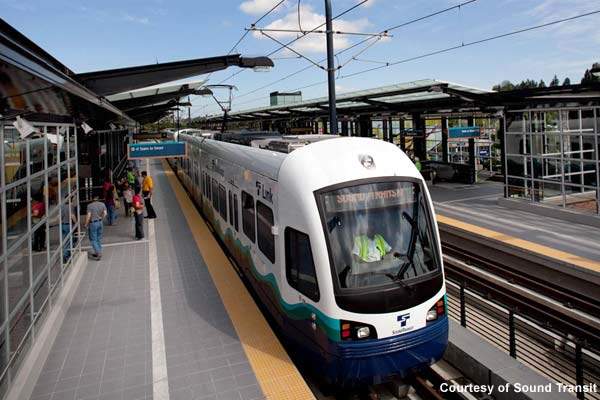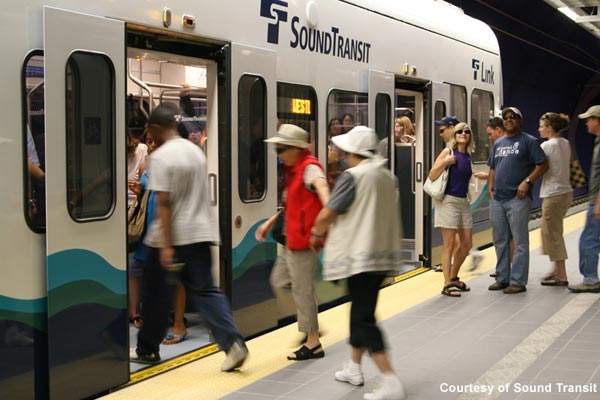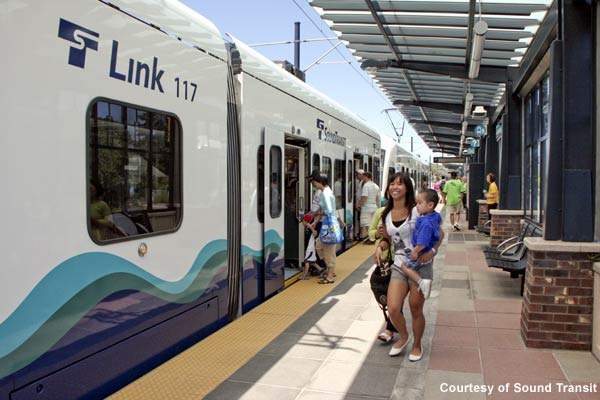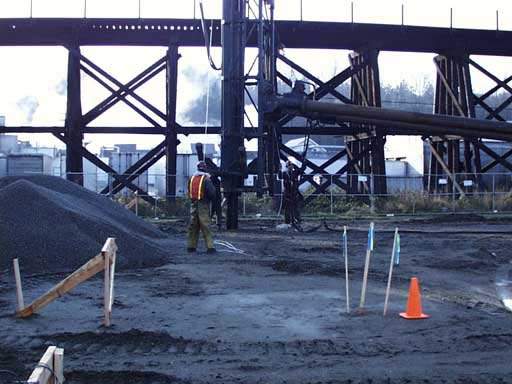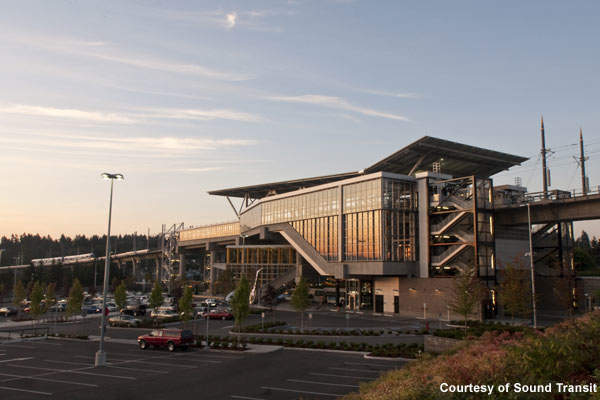Seattle’s Central Link light rail opened on 18 July 2009, offering the city its first light rail. It provides an alternative mode of transport to the residents of the car-dominated city.
The city’s light rail is a result of decade-long planning and approval by voters for an $18bn light rail project encompassing a 53-mile network through Seattle.
The light rail link was built by Seattle’s Sound Transit, which also operates the city’s express buses and commuter rail. Although trains have disappeared from the city’s streets, Seattle has a history of having streetcars and the city’s first streetcars appeared in 1888. The advent of cars in 1939 gradually ended the city’s railway service until it was restored by Sound Transit’s commuter rail and Link light rail.
In 1968 and 1978, referendums were forwarded for funding the construction of a new railway subway system. Seattle lost the transit system because of a lack of support. In late 1980s, the matter was raised again and voters approved the new railway service. The project failed again due to lack of funds.
The voters finally approved the raise in sales taxes and vehicle excise taxes in 1996 for funding the light rail project. However, the project still faced shortage of funds partly due to increased cost of materials. As a result, the rail line was shortened. Sound Transit began construction of the Central Link light rail in 2002.
In 2003, the Tacoma Link light rail was completed and construction work started on the Central Link. The Central Link opened to public on 18 July 2009. The Central Link serves the Beacon Hill and Rainier Valley neighbourhoods and Seattle’s SODO industrial area.
The project
The 1.6 mile Tacoma Link, opened in August 2003, connects Tacoma Dome station and downtown Tacoma free of charge. The Tacoma Link has five stations, including Theatre District station, Convention Center station, Union station, South 25th station and Tacoma Dome station.
The link serves Seattle’s prominent places including the University of Washington’s Tacoma campus, the Washington State History Museum, the Convention Center and the Broadway Theater District.
The Central Link is a 13.9-mile route from Tukwila International Boulevard to Downtown Seattle Transit Tunnel. A 1.7-mile extension from Tukwila International to SeaTac Airport is due to open in December 2009. The Central Link line has 13 stations – SeaTac Airport, Tukwila International, Rainer Beach, Othelo, Columbia City, Mount Baker, Rainier station, SODO, Stadium, International District, University Street, Pioneer Square and Westlake. SeaTac Airport station is yet to be completed.
Once SeaTac Airport station begins service, the Central Link light rail is expected to carry 21,000 passengers every day except on weekends. Sound Transit expects the figure to increase and predicts a ridership of 26,600 by late 2010.
The 3.5-mile light rail extension to the University of Washington from Downtown Seattle via Capitol Hill is under construction and is expected to open in 2016. The extension will serve the people of Downtown Seattle, Capitol Hill and the University District. The University link extension will cost approximately $1.9bn.
Infrastructure
Tacoma Dome station on the Tacoma Link line is equipped with ticket vending machines and has a 2,410-car parking area. Most stations on this line are served by express routes and commuter rail.
The Central Link stations have platforms 400ft long. Stations are fitted with bicycle locker rooms, ticket vending machines and separate bicycle-pedestrian paths. Major stations including Othello, Rainer Beach and Columbia City have plazas offering passenger amenities such as public art, seating, landscaping and lighting.
The Central Link features a mile-long tunnel with an underground Beacon Hill station. The station is 160ft under South Lander Street and has high-speed elevators from the ground level. A staircase is also available for emergency. Westlake station provides connections to the city’s monorail and streetcars while Pioneer Square connects to ferries and International District to Sounder rail.
Rolling stock
Tacoma Link has three cars manufactured by Skoda and delivered in September 2002. Each car is 66ft long, 8ft wide and has double articulations in the middle. Light rail runs on electricity via overhead catenary wires. It is powered by overhead electric wires of 750V dc, with pantograph current collection and travels at a speed of 25mph.
The car has the capacity for 157 passengers and features a bridgeplate to help passengers on wheelchairs board the car. A number of modifications have been carried out on the Tacoma light rail, including upgrading the train black box, installation of CCTV and a passenger counting system to gather data for scheduling, ridership and train position.
The Central Link operates 35 air-conditioned vehicles manufactured by Kinki Sharyo, Japan. Each vehicle is 95ft long, 8.7ft-wide, has a height of 12.5ft and weighs approximately 105,000lb. It is powered by a 1,500V DC traction power system.The vehicle has a 200-passenger capacity including 74 seated and runs at 55mph.
The Central Link vehicles have low floors for easy boarding and room for four wheelchairs, strollers and two bicycles. The cars are fitted with Automatic Train Protection MicroCab systems to display current speed, permitted speed and overspeed information. The cars automatically start a vehicle braking system when necessary.
Signalling and communications
The Central Link line is fitted with a Train-to-Wayside Communications (TWC) system. The system sends a 19-bit message including train number and destination and has a manual switch call if any train is over a wayside loop.
Its functions consist of automatic routing of trains at interlockings, manual selection of power switches and routes and bi-directional signalling. The signal system of this line also comprises a cab signal with an overspeed control transmitting eight-speed commands.
The future
Sound Transit’s second phase plan, Sound Transit 2, includes extension of the Central Link light rail to north, south and east. The plan was approved by voters in November 2008. The entire route is scheduled to be completed by 2030.
The North Link will extend from University of Washington to Northgate via Brooklyn and Roosevelt stations and will extend in a later phase further north to 145th Street, Shoreline, Mountlake Terrace and Lynnwood stations. Once the initial segment begins service, light rail will connect Downtown Seattle and Northgate.
The South Link will connect SeaTac Airport and Tacoma Dome stations, spanning a route of 23 miles. The initial segment will link SeaTac and Redondo/Star Lake stations stopping at S.200th and Highline Community College stations. The final segment will extend the link further south and involves the construction of stations at Federal Way Transit Center, South Federal Way and Port of Tacoma to Tacoma Dome station.
The East Link route was decided in May 2009. The Central Link light rail’s extension to the east will connect Seattle and the suburb of Redmond. The 22-mile route will extend from International District station via Mercer Island, South and Downtown Bellevue and Overlake Transit Center. The light rail will cover the entire route with 12 stations including Rainer Avenue, Mercer Island, Bellevue Transit Center, 124th Street and Overlake Transit Center.

